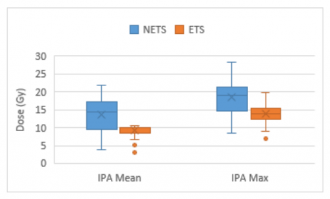Media release
From:
Researchers in Sydney have found a way to significantly reduce radiation dose to erectile tissue when treating prostate cancer with radiation therapy. Using magnetic resonance imaging (MRI), the previously invisible nerves and arteries thought to be responsible for producing erections can be seen – and avoided in radiation therapy treatment.
When using ‘erectile tissue sparing’ treatment plans, the researchers found that radiation dose to these structures dropped significantly, and in one key artery in the pelvis – the internal pudendal artery – by an average of 28%.
Published in the Journal of Medical Radiation Science (JMRS), this research could pave the way for erectile tissue sparing to become a standard part of radiation therapy treatment for prostate cancer.
One in six Australian men will be affected by prostate cancer in their lifetime. While the disease has a relatively high cure rate, erectile dysfunction is a feared side effect among many patients.
President of the Australian Society of Medical Imaging and Radiation Therapy, Naomi Gibson, says reducing side effects is a critical part of cancer care.
“Side effects following cancer treatment can have a big impact on mental wellbeing and satisfaction with treatment. These research results should give hope to prostate cancer patients.”
The research team agrees, saying successful cancer treatment is defined by “both cure and quality of life”.
The study involved 30 prostate cancer patients with a median age of 70 years. Their cancers were classified as ISUP (International Society of Urological Pathology) Grades 2 to 4. The ISUP grading system ranges from Grade Group 1 to 5, with higher grades indicating a greater likelihood of aggressive tumour behaviour and faster disease progression.
The ‘erectile tissue sparing’ treatment plans are designed for stereotactic body radiation therapy (SBRT) – a modern type of radiation therapy that delivers high radiation doses to the tumour in a short timeframe. SBRT is increasingly the standard type of radiation therapy used for prostate cancer.
More studies are needed to determine whether this reduction in radiation dose results in better erectile function following treatment.
Planning for Preservation: Feasibility of Erectile Tissue Sparing during Prostate Stereotactic Radiotherapy is available now in the JMRS under Early View.
Multimedia





 Australia; NSW
Australia; NSW


